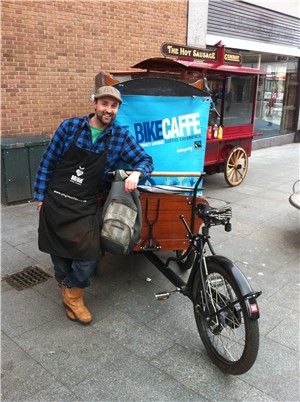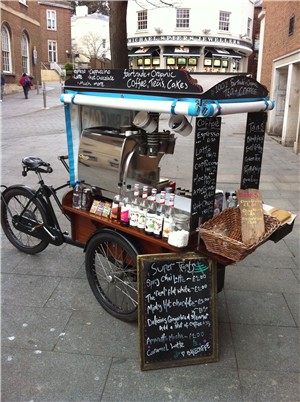

Quick note- Rapha and High5 goodies have been sent out to all the worthy winners. If any of you haven’t yet received any prizes, fear not, they will be with you in the next day or so. Thanks must go out to Rapha and High5 for providing the spoils of war, to RCUK and its fantastic readers for entering the competition, and to www.rokkexpress.com for building www.tom-staniford.co.uk which made this all possible. Thanks guys.
Another solid week of training has come and gone at Delusion Towers, the Exeter bastion of the Grimpeur, and things are beginning to hot up on the training front. Saturday saw me venturing further south to Penzance for an 80-mile hilly epic around the Cornish coast with Rapha Condor Club members. An arduous route was made easier by the fantastic camaraderie displayed by all riders (and honoured guest Colin Lewis) and the generous helpings of coffee cake at St. Ives. Once I’ve managed to track down a few pictures I hope to publish a full write-up in Delusions 12.
I’m now back in Exeter and enjoying the first days of my rest week- a luxurious respite from the daily grind of training made all the more enjoyable due to the fact that the heavens have opened with a vengeance. There’s something especially nice about bad weather on a rest day- you’re flushed with contentment from completing the hard training required of you; a sentiment only exacerbated by the fact you feel you have somehow skilfully negotiated the downpour and cheated the Gods. Of course, the corollary of this feeling is that you feel quite wretched when it’s sunny on a rest day- torn as you are between a desire to rest and not jeopardise your long-term training programme and the desire to get out and enjoy the verdant green of England in bloom. [In February? – ed.]
I sit writing this now at my favourite coffee shop in Exeter. It is pouring rain with terrific consistency but I am warm and philosophical; sheltered as I am under an attractively-positioned umbrella.
Whilst waiting for pictures from Saturday’s epic I’m somewhat bereft of a decent topic for this Delusion, so I have opted to fall back onto discussing one of my major passions alongside making Lycra go fast- Coffee. Please note that in the interests of keeping you all awake I won’t be going into a terrific amount of detail- so any fellow coffee-aficionados amongst you may have to excuse me for simplifying some points.
Coffee has, for a great many years, been the preserve, friend, ally and accomplice of the passionate cyclist. Caffeine has been shown in various studies over the years to; increase fat-burning; increase endurance; reduce perception of pain; and stimulate the central nervous system amongst other things. Subjective testing I have embarked upon also proves (at least to me) that it makes you feel all warm and fuzzy inside.
Coffee has gone beyond being about mere performance benefits for the wannabe Euro-poseur cycliste, however. Coffee and the cafe culture have permeated the very fibre of this glorious sport. Whether under the guise of the obligatory club run coffee/cake stop, the pre-ride warm-up espresso or the post-ride rewarding beverage- no supplement has been quite so widespread in its appreciation and application. Indeed outside of just cycling, coffee is the second most-traded commodity on the world market after oil- with billions invested year on year in fuelling everyone’s cravings for it.
Capitalising on this wave of coffee appreciation and the permeating of Euro café culture into British life is my friend Matt of www.bikecaffe.com. Combining a talent for finding rare and high quality blends with a focus on fair-trade, organic and sustainable trade- he operates from a pimp espresso trike (see pics) often found in the centre of Exeter. I’d urge you all to give him a go if visiting the area.
The production of coffee itself begins with the selection of beans from the coffee plant. The fleshy fruit from around the beans is removed, and the ‘stone’ inside is the actual bean. Coffee plants, like grape vines, grow best in very specific conditions, and this combination of environmental factors (altitude, humidity, sunshine, soil composition, wind, etc) known as ‘terroir’ has a dramatic effect on the flavour of the beans themselves.
Once stripped of fruit, the ‘green beans’ as they are known are left in the sun to dry. Individual plantations/estates may turn these by hand or machine according to their own views on proper drying. The dried beans are then bagged up for roasting.
The larger estates may have their own roasteries on-site. Others may, for economic reasons, ship their green beans to the country of sale and roast them there, or roast them though a specialist company. Roasting involves heating the beans in a special kiln- the temperature and length of time dependent upon whether a light, medium, dark etc variety is required. This naturally affects flavor- with darker roasts creating a darker, more intense brew.
The roasted beans are then sealed in airtight containers and sold. Kept in the fridge/freezer in airtight packages, roasted beans can remain fresh – even for months. Once ground, though, freshness (and taste) will start to deteriorate immediately depending on variety. Old coffee is generally quite muted in flavour, will not produce a pleasing crema (the creamy off-white substance found floating on quality coffee) and may even taste quite bitter/stale.
The fineness of the grind itself is important in brewing coffee. Cafetieres or ‘French press’ require a moderately coarse grind for best flavour. Espresso requires a finer grind. Too coarse and the coffee will run through an espresso machine too quickly, resulting in a weak coffee with no crema. Too fine or tightly packed and the coffee will be too strong or acidic as the hot water has burnt the coffee.
Individual coffees- whether from a specific region, specific variety, or even specific estate all respond differently to pressure and temperature- so home-grinding requires some mild experimentation in the pursuit of the perfect cup. Of course a general fine grind will generally work with all espresso machines- but for the perfectionists/purists/nerds such as myself the pursuit of the perfect espresso is all part of the joy of coffee appreciation.
Regardless of whether you are a casual drinker or are consumed with a craving for constant coffee perfection I would urge you all to try as many varieties/blends as possible. Like wine, there is a whole world of taste, texture and flavour just waiting out there for you to experience.
And, let’s face it, it’ll make you ride faster.
What’s not to like?





